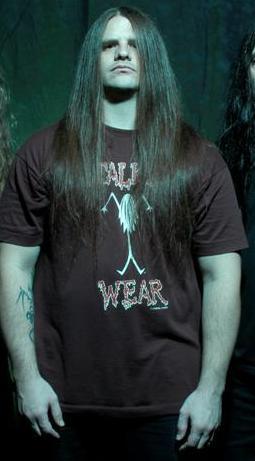METAL MONDAY: TWENTY YEARS OF METAL
posted in: Features • Rock
Twenty years is a long time. Two whole decades. Many things can change in that amount of time, but few styles of music went through as many changes as metal.

"The flute is a very heavy, metal instrument." - Ian Anderson
1989 was the tipping point that steered metal into the state we know it now. The thankful decline of the hair metal plague was in full-effect, death metal was on the rise and thrash metal was still going strong. This was the year of the infamous Jethro Tull upset over Metallica for the Best Hard Rock/Metal Performance Vocal or Instrumental in the first ever Heavy Metal Grammy (much to the dismay of the metal community and rightfully so”Jethro Tull is not even close to metal). Tipper Gore and her PMRC was bringing the hammer down on metal with their censorship threats, and Guns N’ Roses had taken over the mainstream metal territory. Metal was under fire from all angles. For the greater good of metal, however, all of these things were ultimately great. The core die hard metal community decided they had enough, and were going to take a stand by pushing metal styles to the extreme.

Prog-metal greats, Dream Theater
Dream Theater, Stratovarius and Obituary are the most notable bands who released debut albums in 1989, all of which saw moderate success, and who later came to shape their genres for the next two decades. 1989 also saw the formation of many new bands, such as Dark Tranquillity and Cannibal Corpse, who helped shape the metal world over the last twenty years. Even with the huge successes these bands saw in the 90’s, they were still not able to overcome the hip hop and grunge onslaught throughout the decade and break into the mainstream ” unless you were Anthrax and did a collaboration with Public Enemy (which ultimately led to the rap metal fiasco of the late 90’s). I’m not talking about the popular bastardized offshoots of metal (e.g. Limp Bizkit, Nine Inch Nails, Korn, Disturbed, Deftones, etc.) that developed in the 90’s. I’m talking the real metal of the 90’s”Blind Guardian, At The Gates, In Flames, Symphony X, Suffocation”none of these bands got as much mainstream exposure in the 90’s as they deserved. Instead, the less abrasive grunge style took over. The mainstream was tired of the aggression-fueled style that metal brought and grunge stepped up to the plate, switching the anger for angst which hit home for the flannel-clad teenagers of the 90s.

George "Corpsegrinder" Fisher, of Cannibal Corpse
Ultimately, metal being a subterranean music style throughout the 90’s was for the betterment of all metal genres. Everyone saw what happened in the 80’s when metal broke into the mainstream (yes, hair metal). The same thing happens to most genres of music”evolution happens when the genre is not in the spotlight (which means grunge is directly responsible for the black sheep that is Nickleback). Without the 90’s era of metal, we could still have things like the horrid pop-punk and boy bands of the early 2000’s (we can actually thank hip hop for helping to rid of that nuisance). Slowly but surely, metal is making its way back into the mainstream. There are 14 metal albums in the Billboard Top 200 as I write this, one of which debuted at #6” Black Clouds & Silver Linings by our progressive pals Dream Theater. Metal is stronger than ever, and looks as though it is still on the rise. Lookout, mainstream media, we are storming your beaches, and about to take over your cities. Yes, those ones that were built on rock and roll.
